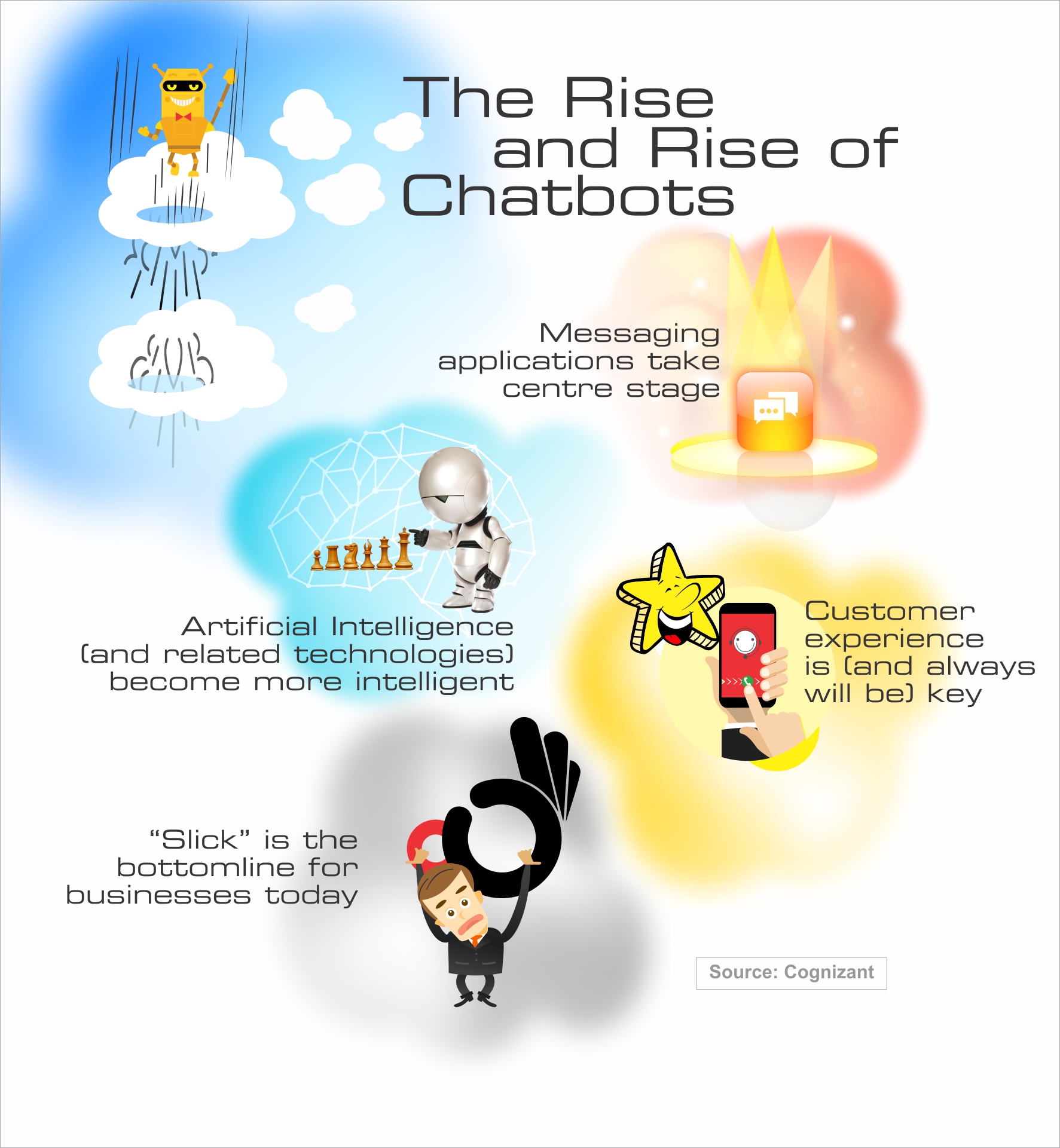Are chatbots finally getting their due?Its manifold abilities of easing business processes (naturally resulting in the healthy ringing of cash registers) have been met with a healthy dose of cynicism. Experts and analysts are cautiously optimistic about it-to bot or not to bot, that IS the question.
How it Began
But, wait, before we get down to the nitty-gritty, let’s go back briefly to where and how it all started. It all began (or at least is believed) as early as 1950, with Alan Turing’s intelligent machine. This was followed by ELIZA in 1966. Essentially, ELIZA was an intelligent agent that could conduct conversations very close (or at least perceived to be) to human interactions. Thereafter, this field was tinkered with aplenty in the seventies and eighties. The concept, however, didn’t actually take off until quite recently!
So, why has the spotlight turned to chatbots? For a number of reasons, actually, none of which are surprising!

All in all, it seemed rather within the natural order of things that chatbots grab the attention (and indeed, imagination) of the technology world.
Is it in for the long haul? Yes, because customer experience management is the order of the day. The customer is always right. And that is an understatement. Naturally, then, brands don’t want to lag behind in the race for customers. The next obvious step? Turning their attention to chatbots, of course!
And why not? Logically, chatbots are easy to invest in and don’t burst one’s pocket seams. They are easy to update in real-time, in tandem with customer data (and we all know how voluminous that can get!). This, naturally, helps the enterprise to help and serve their customers better. At the end of the day, it boils down once more to enhanced customer experience! Isn’t that the underlying idea, after all?
Moving on, is it merely a flash-in-the-pan? Think Tay. Think Zo. Think The M Project. Though merely focusing on rogue bots to support this argument isn’t fair. Or viable. Here’s how-ironically, various reports have suggested that attempts to ensure that bots offer a near-human-like experience seem to have backfired. The “uncanny valley” theory, wherein a human’s response to a robot quickly turns negative if the bot appears “almost” human seems to be in play. The result? A less-than-ideal customer experience.
Speaking of which, industry experts have gone as far as questioning the very concept-why does it exist? It doesn’t solve any unique purpose that doesn’t already have a solution. It is big-ridden, to boot. It isn’t (last but certainly not the least)an improvement on existing smartphones or applications. So, why?
Let me leave you, dear readers, with a final point. Is the future success of chatbots merely confined to twiddling a few knobs to make adjustments? After all, the argument is that one has to ask the bot crisp and clear questions to get a coherent response. Is that it? To make it more utilitarian and specialized and voila, instant success?
The bottom line -are chatbots ready to take their rightful place or ought a million more debates focusing on the dangers of the concept, as opposed to the advantages take place? Where does it end? Does it, at all?






